'No one was going out searching': Powered by grief, groups looking for missing relatives in Mexico grow
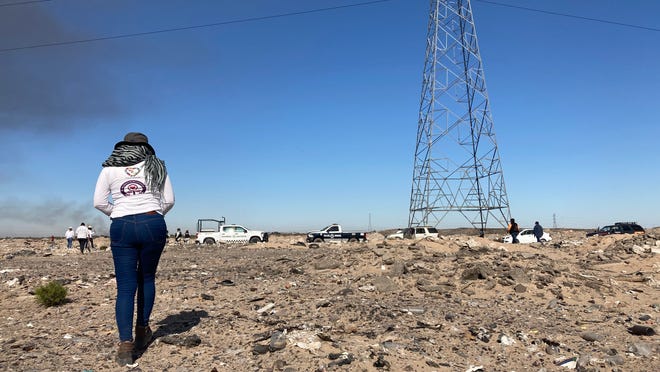
SAN LUIS RIO COLORADO — On a Saturday morning, about 20 people gathered at the parking lot of a sports complex in Sonora, Mexico. Some greeted each other with familiarity, while a couple joined the group shyly for the first time.
They were there to scout the outskirts of the border town. Then they would dig, in search of their loved ones.
The undertaking marked the end of a week-long search for missing family members in Sonora. It underlined Mexico's national crisis of enforced disappearances, with more than 95,000 people missing, and the simple human desire for closure.
Search collectives in Mexico have grown into large networks determined to find their disappeared in spite of government unresponsiveness.
Many groups form after a couple of highly visible individuals start searching on their own, then slowly are joined by dozens more.
This was the origin of Todos Somos Érick Carrillo (We All Are Érick Carrillo), which launched in Baja California and now is searching throughout Mexico, and Madres Buscadoras de Sonora (Searching Mothers of Sonora), operating in the Mexican state neighboring Arizona.
Both collectives, started in 2019, grew out of the desire to find their missing relatives — and, if located, mourn them.

They organized the Third State Search Brigade — starting in Huatabampo, in southern Sonora, and ending in San Luis, bordering Arizona — in response to many requests from families in the sate. In the communities they visited, they were met by locals, members of other collectives and activists coming from across Mexico.
Paralelo 31, a search and rescue nonprofit aiding migrants in the U.S. Southwest desert, joined in support, too.
By the end of the week, on Nov. 26, the brigade found about 25 clandestine graves and about 50 body remains in eight Sonoran cities. The exact number will be known after forensic teams conclude their work.
“When my son went missing, no one was going out searching,” said Erick Carrillo, president of the collective Todos Somos Érick Carrillo. The group is named after his son and now has a network of about 400 volunteers in the state of Baja California, he said.
Carrillo went out to the streets every day to search his son after he went missing on May 31, 2019. First, about 20 relatives joined him; two weeks after, about 20 unrelated people did, too. They started digging, they began to find bodies, and they decided to form a collective.
Today they use their network to amplify the search for disappeared relatives, receive calls and tips to conduct on-the-ground searches, and are contacted frequently by Baja California attorney general’s office to share information.
“Sadly, we the victims are the ones sustaining all of this,” said Cecilia Patricia Flores Armenta, leader of the Madres Buscadoras. Two of her sons have disappeared. Gang members returned the youngest alive to her on May 2019 “as a present for Mother’s Day,” she clarified.
More than 100 women have joined since she formed the collective to conduct group searches. Many were looking on their own at first; out in the desert, in the mountains and near the coast, carrying a stick and a shovel. They found each other through Facebook and haven’t stopped searching since.
They run on donations from “empathic citizens” and, just recently, the sporadic escort from law enforcement officers.
“For us, there is no budget. There is budget for roads, for police. For everything except for us who search,” Flores said about the lack of government support.
Since its creation, the collective has found about 300 bodies and helped rescue 139 people alive, getting them back to their families. They are doing what others are paid to do but don’t, Flores said.
“They don’t have an aching heart or an empty seat at their dinner table every day.”
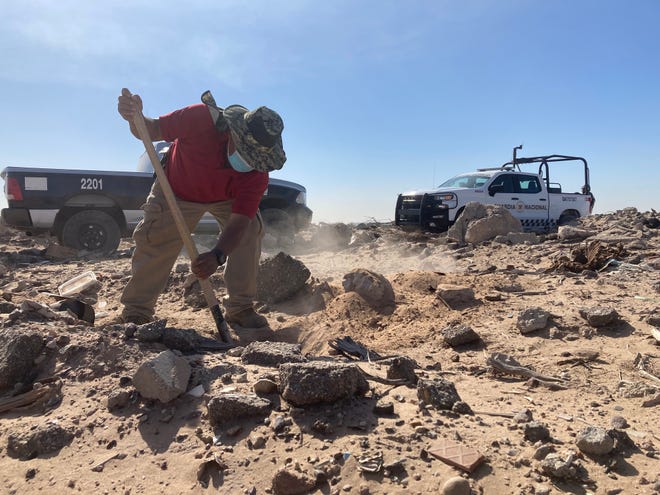
Search collectives and a 'forensic emergency'
The forced disappearance of persons is not a new phenomenon in Mexico, but it intensified with the growth of criminal organizations and as former President Felipe Calderon’s “War on cartels” unfolded from 2006 to 2012.
President Andrés Manuel López Obrador says there is currently no "war," stressing that his strategy seeks to pacify the country.
As early as 2009, citizen search groups started forming. Thirty-five of them grouped in the Movement for Our Disappeared in 2015. Some estimates today suggest about 70 collectives are working in Mexico, about eight in Sonora, 12 in Baja California, and some coming from Central America.
Women far outnumber men in the collectives, often comprising more than 90% of a group, estimates a report from the Mexican Institute for Human Rights and Democracy.
Almost all search groups receive little or no government support. Some have decided to form nonprofits or start a foundation, like Todos Somos Erick Carrillo.
When they have a positive finding, they call government forensic teams to start the identification process. This process can take from three months to a full year, Flores, the leader of Madres Buscadoras de Sonora, said.
However, that process has its flaws, too. In 2019, 25 of the 32 Mexican states identified fewer than 30% of the bodies in the Medical Forensic Service.
Flores fears that the bodies they dig up might end in a common grave again without being identified — in effect being doubly disappeared.
Mexico has made several legislative and institutional changes, some as recently as last year, to address the crisis. Among them are the General Law on Disappearances, the National Registry of the Disappeared, national and state search commissions, and Mexico's Extraordinary Forensic Identification Mechanism. The latter, an independent multidisciplinary entity created to deal with the forensic emergency, started work in August.
Mexico’s National Search Commission reports that from December 2018 to June 2021, state searches uncovered 879 clandestine graves and 3,025 bodies. About one-third of them were identified.
The State Search Commission of Sonora didn't respond to the Republic's request for comment.
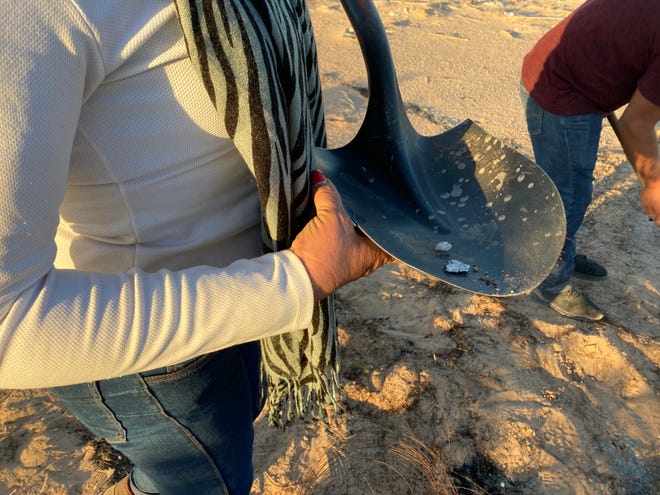
U.N. committee urges action against disappearances
The Mexican government had reported 95,255 disappeared through Dec. 1.
For the first time, the country accepted the inspection of the U.N. Committee against Forced Disappearances, which concluded its first official visit Nov. 26. The federal government had opposed all previous visit requests, made since 2013.
The committee visited 13 Mexican states and met with authorities, victims and civil society groups.
At the end of their visit, they acknowledged the legislative and institutional steps that Mexico has taken to address disappearances but underscored they are still widespread and "impunity almost absolute."
The committee also highlighted and applauded the "fundamental role of women in their fight against disappearances" which, they wrote, has been key to achieve the legislative and institutional changes.
Calling for the humane treatment of victims, the committee also stated "the forensic advances are obscured by a serious crisis, reflected crudely in the more than 52,000 unidentified deceased persons." The remains of these 52,000 are separate from the 95,000 currently missing.
“It is also necessary to break the re victimization cycle: they disappear people, but they also disappear located bodies and even files," the U.N. Committee wrote.
"With that, disappears the hope of justice. The shout of desperation of victims is heartrending and needs immediate intervention.”
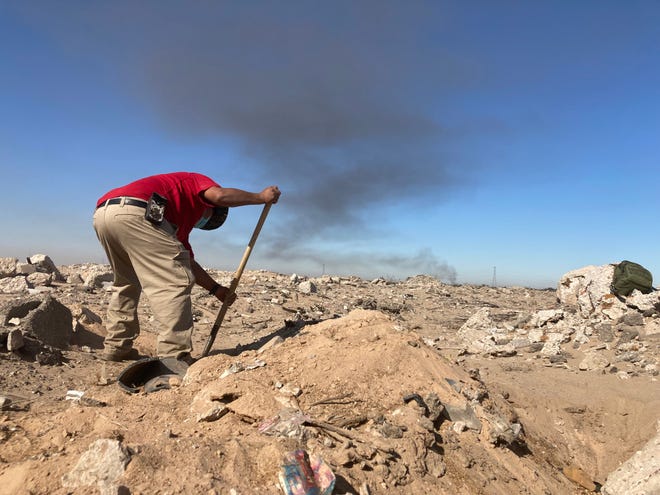
A search for sinking ground, loose earth, burnt marks
In San Luis Rio Colorado, the group wandered around the sports complex parking lot for nearly two hours. In all seven localities before San Luis, they had been met by members of law enforcement from local, state and federal government, observers from the national and state human rights commissions and criminal investigation agents. But that day, neither municipal police nor the Mexican national guard was showing up.
The phone of Flores, the leader of the Madres Buscadoras, rang endlessly.
At one point she got a call from someone who said had her son and wanted to give him to her.
"Where can you give him to me and where should I go?" she asked, as she put the phone on speaker, giving a bold smile to María Martínez, a searching mother from Caborca, waiting by her side.
Flores and the caller went back and forth, naming public places.
"When can you get there?" the man on the line asked.
"In five minutes," Flores said without hesitance, winking.
She hung up.
“Who are they trying to scam? Now they will call again asking how much I will give them. You will see,” Flores said.
Almost everyone in the brigade was looking for a missing loved one: a brother, a son, a husband, all of them lost to organized crime violence, some involved with it in one way or another. The brigade, with people coming from the states of Sonora, Baja California, Guerrero and even San Diego, strives to find anyone, regardless of the connection. All the missing are someone’s disappeared.
The group begins its work after municipal police arrive. The nine-vehicle convoy drove out of town, passing mechanic shops, empty lots and scattered trailers. It headed to the city dump, at the edge of “Las Antenas,” a place locally known for crime and shootouts.
The area is extensive, with hills of discarded car tires, trash and shattered glass. The convoy heads straight to antenna tower T.99. Two women from Sinaloa received a tip a month ago about the possible burial site of their brother, who disappeared 13 years ago.
Civil search groups have a particular advantage: People will talk with them. The municipal police officer joining the brigade said those who have information about a crime do not share it with officers. They don’t want to get tangled up in an investigation, he said.
The men of the brigade start digging.
Some women break off in a different direction, carrying a “T”-shaped metal rod and shovels. They wander about, looking at the ground for signs of sinking, loose earth or burnt marks.
The brigade left the antenna without findings and moved off to other locations, followed by law enforcement. As the sun was setting, they found an empty half-dug grave and further out a pile of tires, burned to wires, and bits of calcinated bone remains — of no use for forensic teams nor families.
As they were about to leave, a group detected a whiff of decomposing flesh and saved the site coordinates on a GPS.
Flores said the team would return to some of the same search spots in two or three months. They will keep digging around the places where they had positive findings, hoping they can bring more victims back for proper burial.
“We have mixed feelings at the moment of a finding. You are satisfied that a family will finally have some rest, but at the same time the distress to thinking it can be your own,” Flores said.
Those searching often face conflicting feelings of wanting to find their relatives when they dig in the desert, while also holding on to the hope they will never find them underground.
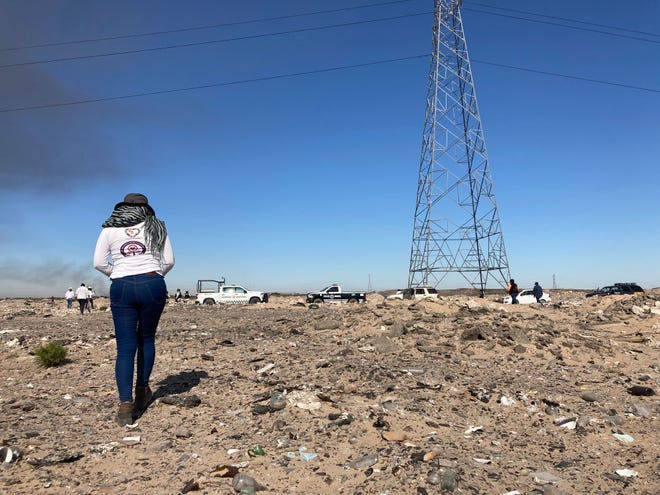
Maria Martínez's oldest son was forcibly disappeared on 2017. She lived in Magdalena and he lived in Caborca, working in greenhouses.
He had no reason to go missing, she said. She would often see him training to dance the waltz with his daughter, who was just about to turn 15 and preparing for her quinceañera.
Martínez went out to look for him several times, without luck. About a month after his disappearance, the family received a call notifying them he had been killed. Martínez describes her shock as being “brain-blocked.” Still, she started going after every single tip, talking to journalists, walking alone in the hillsides and near the border. She started calling the morgues.
After a year of search, she would still look for her son in every passing car, and in the faces of people in the street. It wasn't until 2019, when she joined the Madres Buscadoras, that something hit home.
The first day she went out with them on a search, almost two years ago, she dug out a decaying body.
“I didn’t want to search for him this way,” Martínez said. “I wanted to look for him, but so I could bring him back to his grandchildren.”
Have news tips or story ideas about the Arizona-Sonora borderlands? Reach the reporter at cmigoya@arizonarepublic.com or send a direct message in Twitter to @ClaraMigoya.